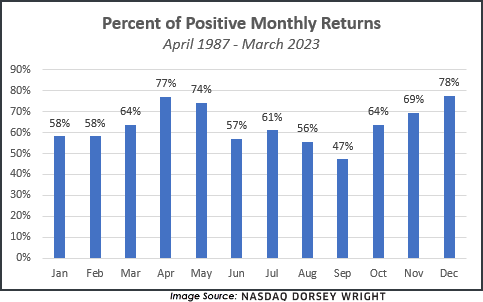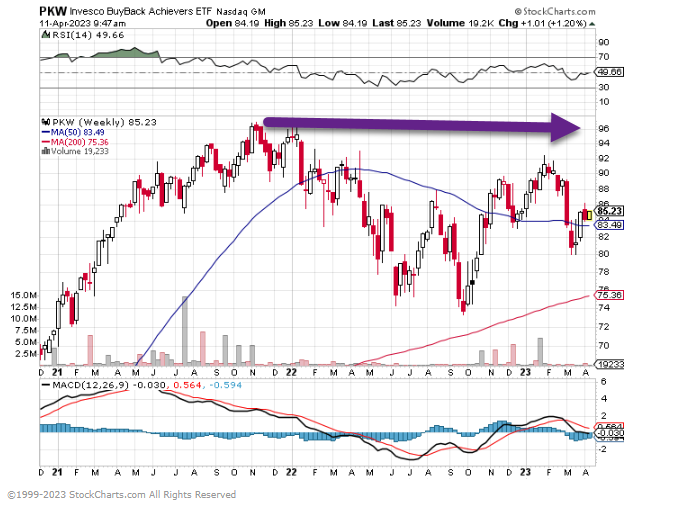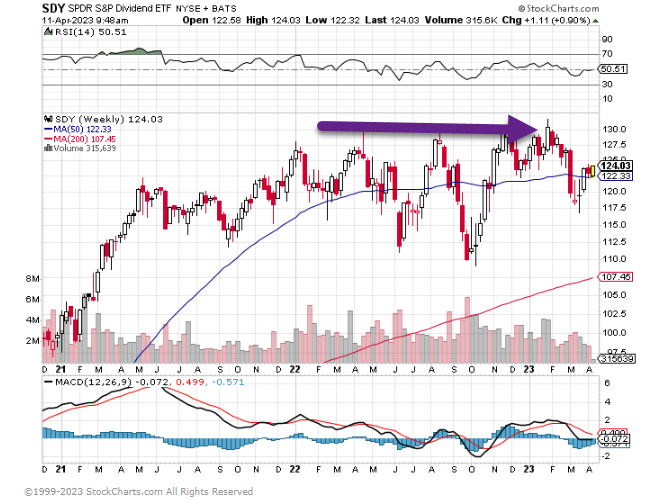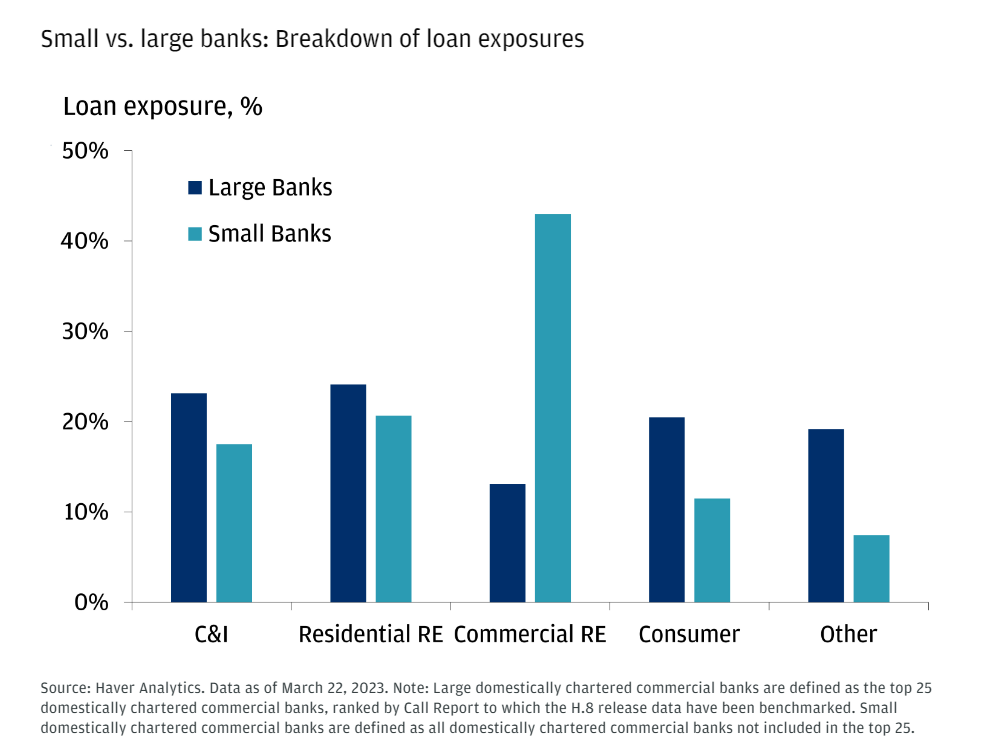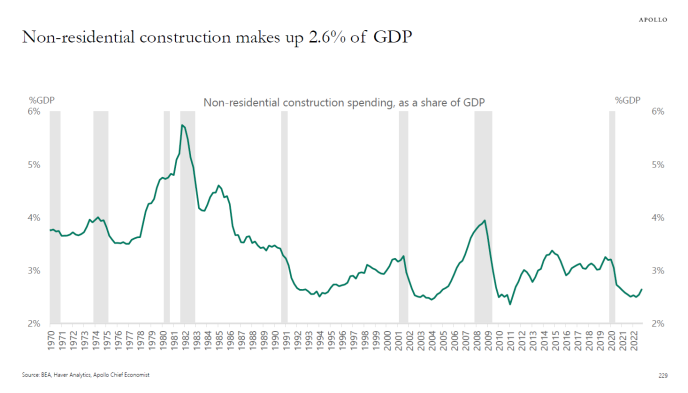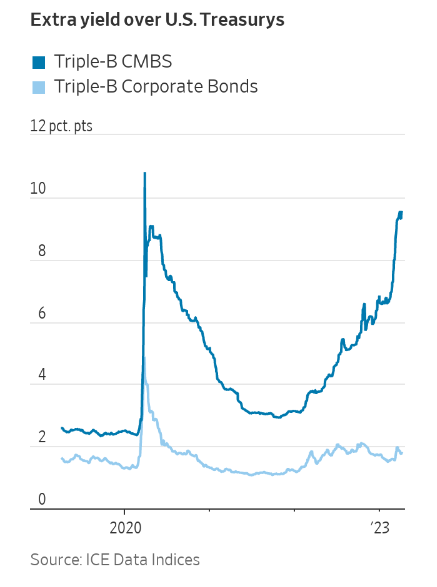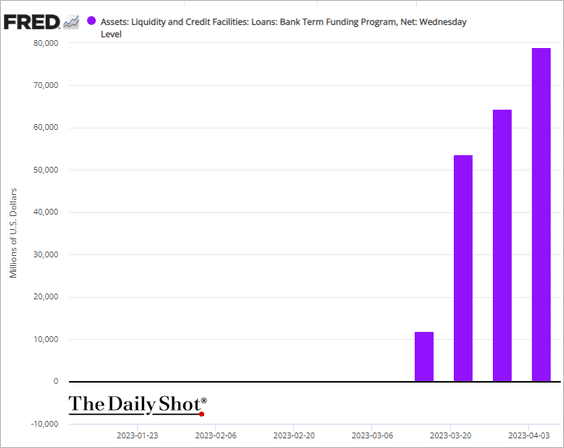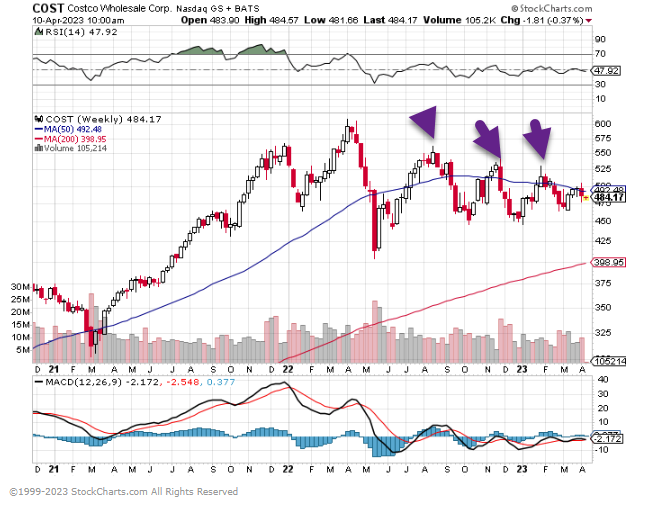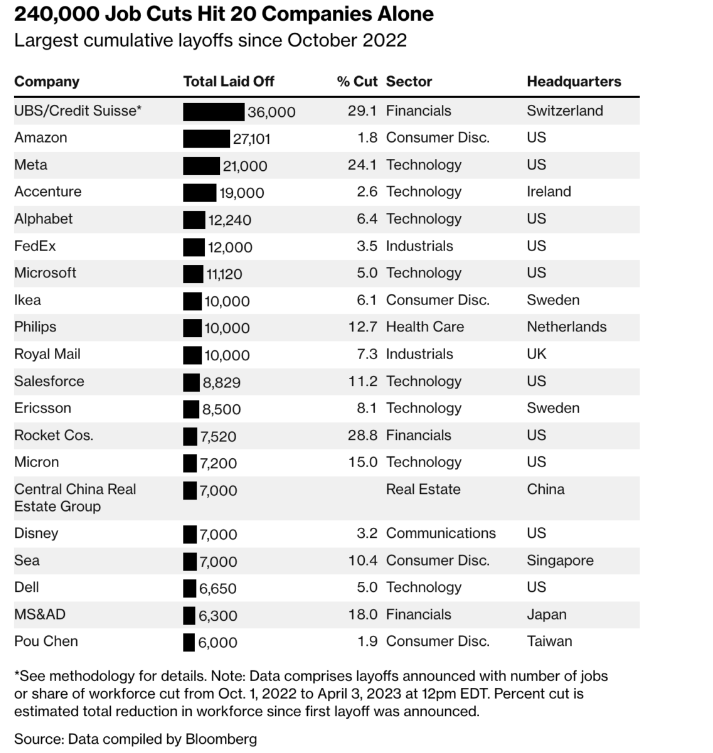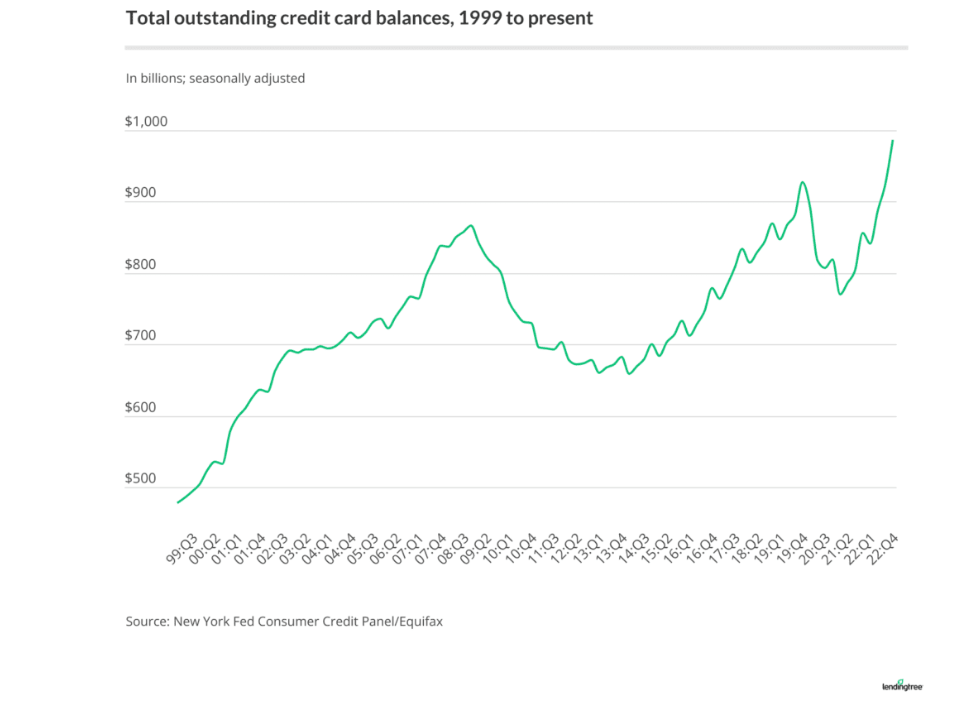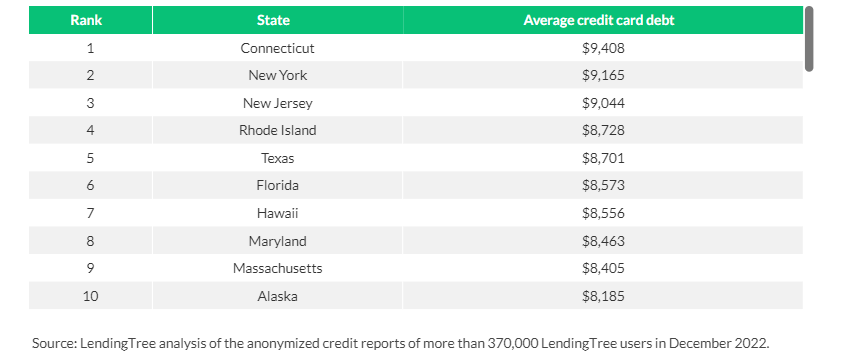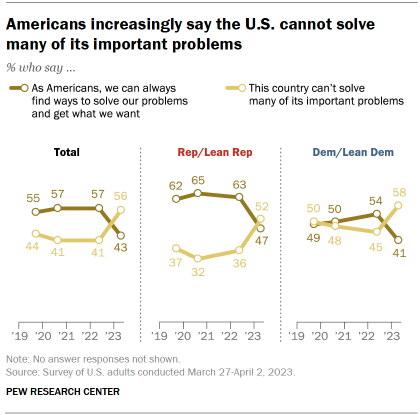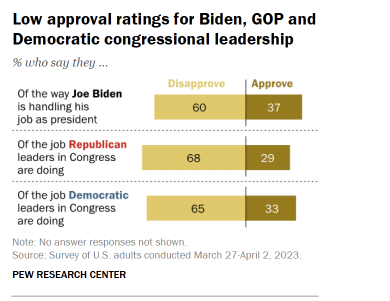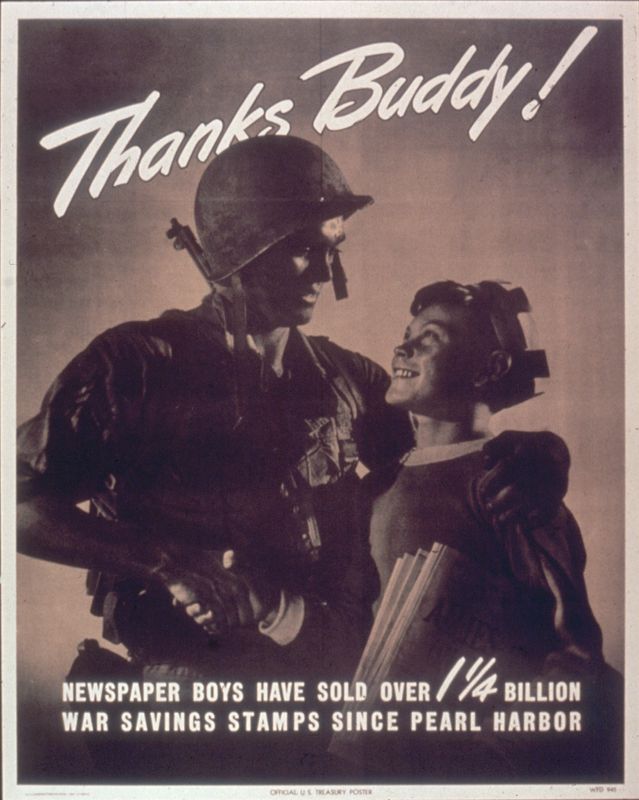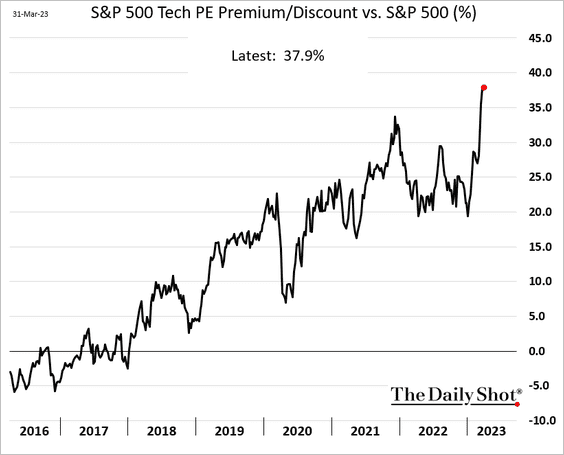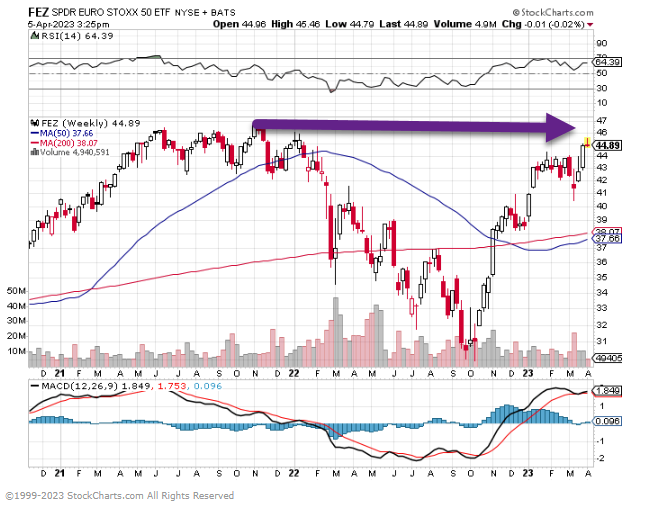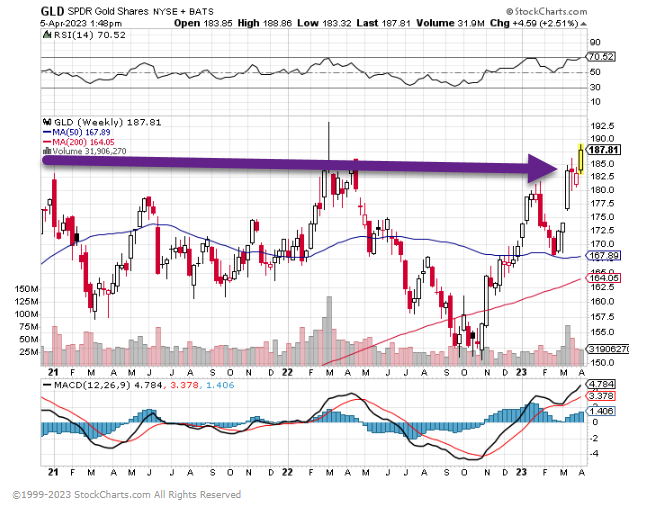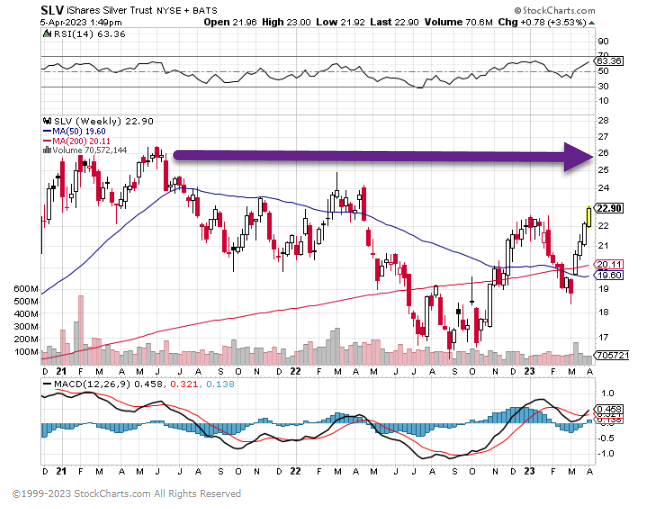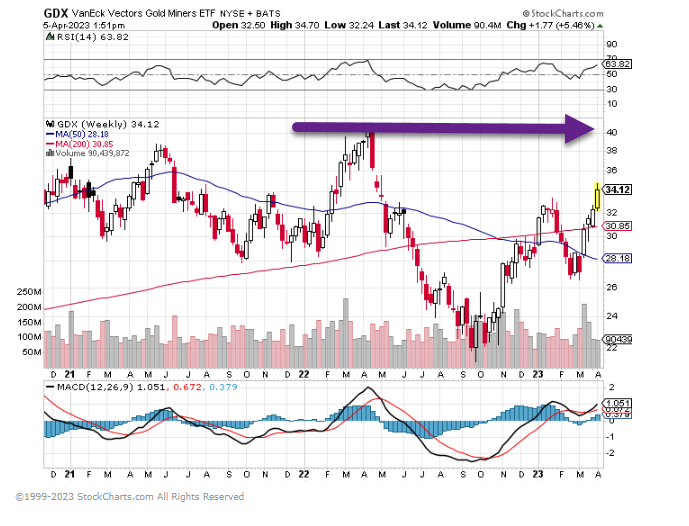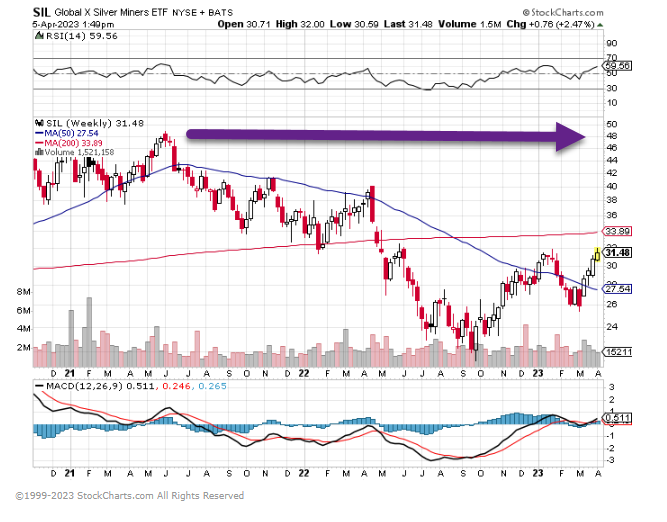1. IWM Small Cap Stocks….Holding Lows 3rd Time
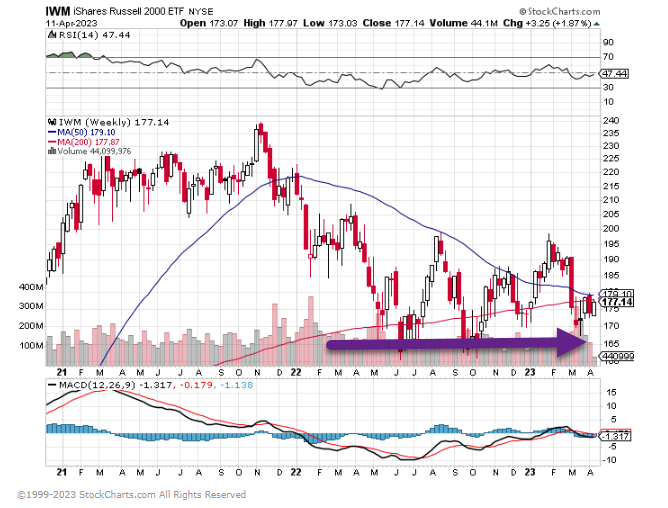
2. FANG+ Stocks Run Up to Previous Highs Versus Small Cap.
This chart compares FANG stocks to small cap index…recaptured all of 2022 sell off
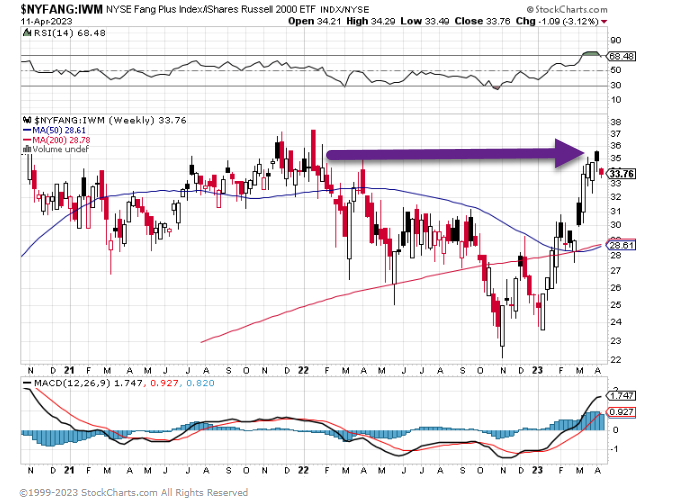
3. FANG+ Big Outperformance Versus S&P Value in Q1
This chart shows FANG+ stocks vs. RPV (S&P Value)….Still well below 2022 highs.
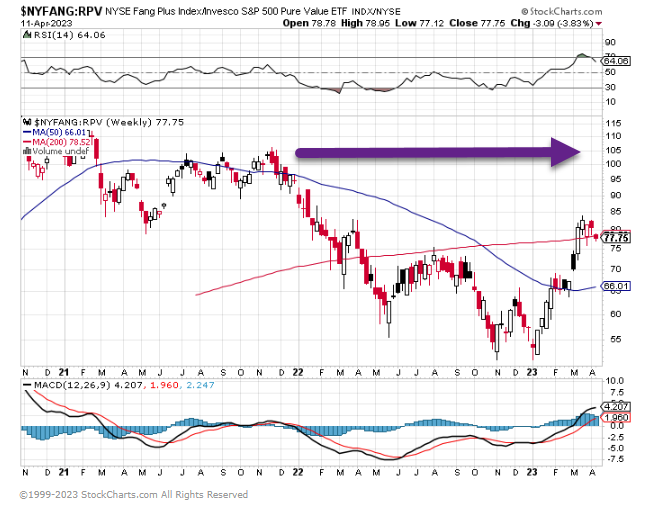
4. PPH Large Cap Pharma Rally Back Toward 2022 Highs.
Big pharma underperforming S&P year to date but bumping up against new highs
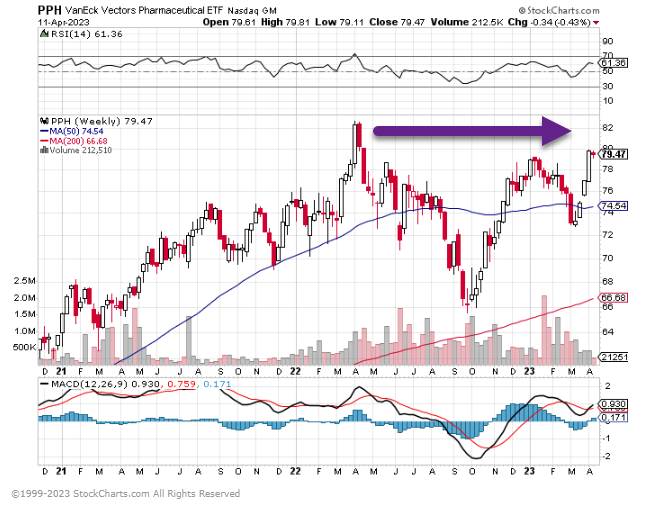
5. Two Household Restaurant Names…McDonalds and Starbucks.
MCD straight up thru all the noise new highs ….
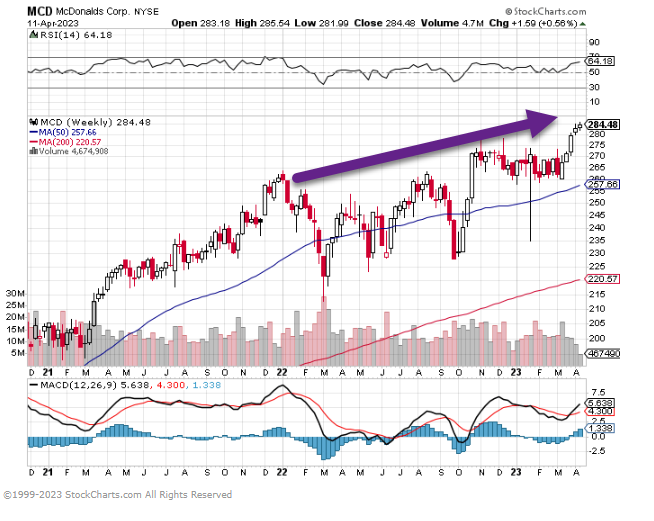
Starbucks…50day back thru 200day to upside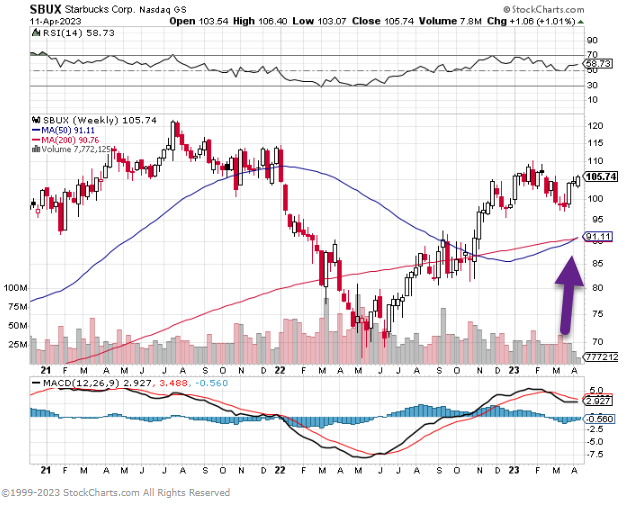
6. BITO Bitcoins Kinda Of ETF…..Close to Double Off $9.5 Lows

7. XLF Financial Sector ETF …Holds 200 Week Moving Average During Bank Semi-Crisis
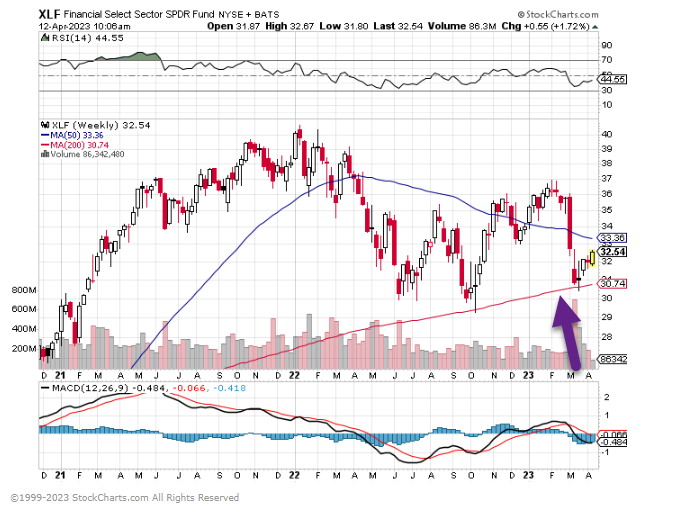
XLF ETF 25% Banks
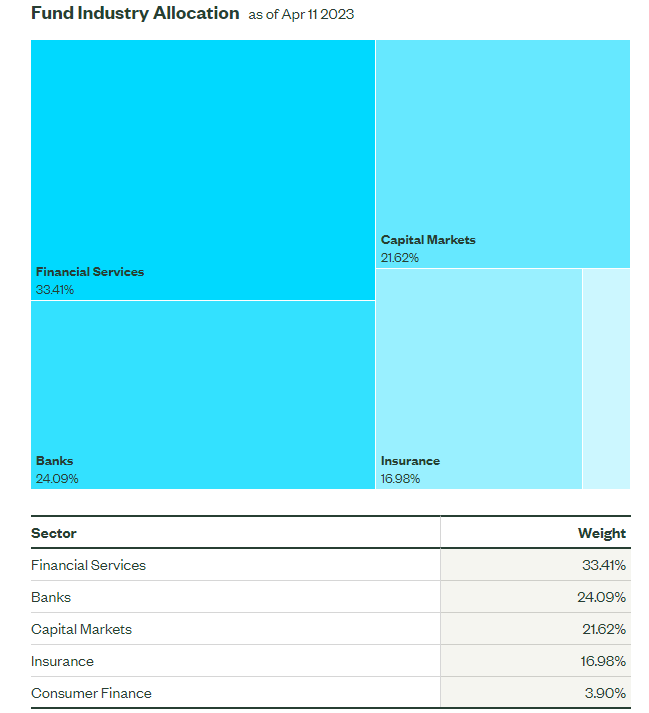
https://www.ssga.com/us/en/institutional/etfs/funds/the-financial-select-sector-spdr-fund-xlf
8. Have Personal Computers Peaked?
Chartr.com

Bad Apple
Worldwide shipments of Apple Macs fell to just 4.1 million units in the first quarter of 2023, according to IDC figures, as the wider PC market struggles after reaching near-10-year highs during the pandemic.
Other heavy hitters in the computer hardware market like HP, Lenovo and Dell also had a rough start to the year, with figures dropping 24%, 30% and 31%, respectively, confirming that the brief boom for the PC world now looks to be far behind us.
Shutting down
While the rise of working from home had many rushing out to order new laptops and computers to load Zoom on, the Q1 shipment figure is “noticeably lower” than pre-Covid levels, with analysts speculating that it’s not only a post-pandemic drop off, but also wider economic uncertainty that’s driving sales down. The 56.9 million PC shipments figure recorded in Q1 is the second lowest in the last 10 years and represents a 29.3% fall from the same period in 2022.
9. Small Business Owners Poll…Inflation Problem Rolling Over…..Poor Sales Moving Up Off Bottom.
Bespoke Investment Group
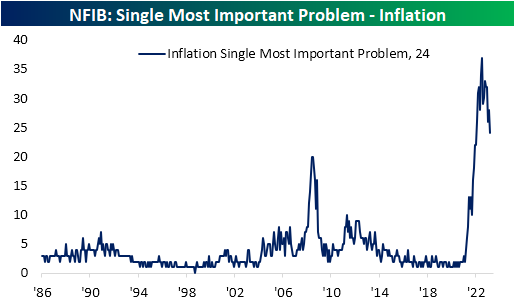
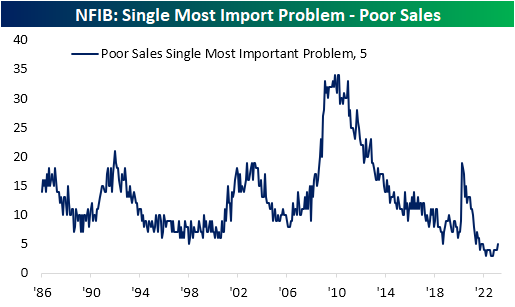
https://www.bespokepremium.com/interactive/posts/think-big-blog/inflation-concerns-continue-to-ease
10. At 100 years old, I’m the ‘world’s oldest practicing doctor’—5 things I never do to live a long, happy life
Dr. Howard Tucker, Contributor CNBC
When I was born in 1922, the average life expectancy in the U.S. was 58 years old for men, and 61 years old for women.
So as a 100-year-old practicing medical doctor and neurologist, patients often ask me for tips on how to stay healthy, happy and mentally sharp.
Good genes and a bit of luck can give you a head start, but here are some lifestyle rules I have lived by over the past century:
1. I don’t spend my days retired.
I’ve been working for more than 75 years, and was even named as the world’s oldest practicing doctor by the Guinness World Records. Sara, my wife of 65 years, also still practices psychoanalysis and psychiatry at age 89.
During the pandemic, I treated patients for five or six days a week. Then I switched to teaching medical residents for up to three days a week. (My hospital just shut down, so I’m currently doing medical legal review work while I look for another role.)
When I’m not working, I like spending time with my four children and 10 grandchildren, snowshoeing, and watching Cleveland sports.
If you’re blessed to have a career you enjoy and are still able to work, consider delaying retirement. Many people who retire and become inactive in their day-to-day routine are at an increased risk of cognitive decline.
2. I don’t let myself get out of shape.
Swimming, jogging, hiking and skiing well into my late-80s has kept me strong and healthy.
While I no longer ski and am not quite as active as I once was, I try to get in at least three miles on my treadmill at a brisk pace most days of the week. Watching Turner Classic Movies in the background helps curb some of the boredom.
Studies have found that something as simple as a 15-minute walk outside could lower your risk of premature death by almost 25%.
3. I don’t smoke.
When I was in high school in the 1930s, I told my father that I wanted to take up smoking. He said, “That’s alright with me. But why would anyone want to put anything but fresh air into his lungs when life is so short as it is?”
That immediately took the fun and excitement out of tobacco for me.
I remember attending medical meetings where doctors would, with a cigarette dangling from their mouths, tell patients to take up smoking because it would “curb your appetite and quiet your nerves.”
Today, we know that cigarette smoking leads to cancer, stroke, peripheral artery disease, coronary artery disease, and other pulmonary and cardiovascular diseases.
4. I don’t restrict myself.
Moderation allows us to live life to the fullest while also keeping us from going overboard and impacting our health in the long run.
I’ll have a martini and New York strip steak occasionally, but not every day. Sara is an excellent chef, and she’s helped me maintain a healthy and varied diet. We have salad with every meal, and enjoy greens like bok choy, broccoli and Brussels sprouts.
The real secret to longevity is that there are no secrets. But we live daily and die once, so we must make the most of the time we have.
5. I don’t let my knowledge go to waste.
Having practiced neurology for over seven decades, I’ve witnessed medicine evolve from lobotomies to the latest computerized imaging techniques.
I thoroughly enjoy teaching my medical residents and students, and I learn a great deal from them as well.
I have also been participating in upcoming documentary about my life. It’s been a joy to share stories from my long career with the next generation.
Dr. Howard Tucker is a neurologist from Cleveland, Ohio and was named the ”Oldest Practicing Doctor″ by Guinness World Records. He received his law degree and passed the Ohio Bar Exam in his late 60s, and served as chief of neurology of the Atlantic fleet during the Korean War. A feature documentary about Dr. Tucker is in the works. Follow him on TikTok, Instagram and Faceb
